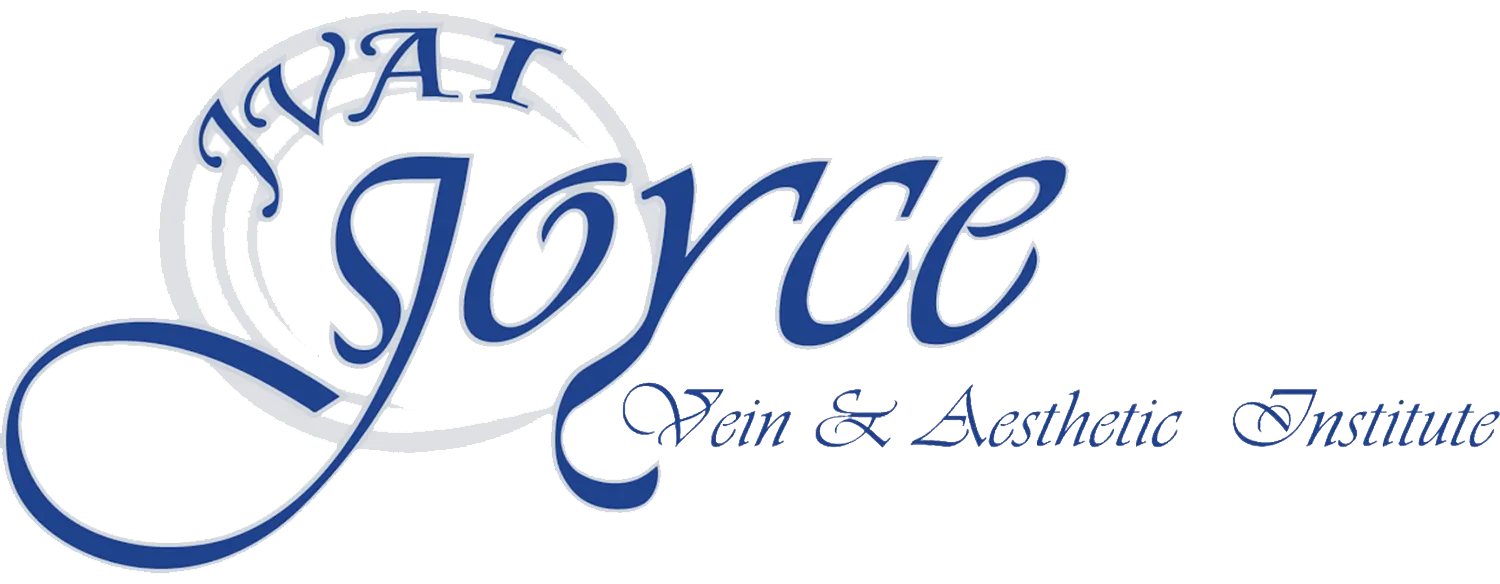
Change Your Legs. Change Your Life.
I know this disease, let me help you remove it from your life.
Committed to Excellence in Vein Care & Skin Health
The dedicated team at the Joyce Vein & Aesthetic Institute, led by Dr. Joyce—a highly experienced vein specialist with over 22 years of expertise and more than 35,000 vein surgeries—delivers state-of-the-art treatments for all types of venous diseases and aesthetic skin care concerns.
You are one step away from the most effective, technologically advanced procedures for the treatment of all types of venous disease AND unmatched anti aging skin care and beauty solutions through JVAI's EXCLUSIVE APPROACH to beautiful, healthy, young looking skin.
Understanding the Stages of Varicose Veins
Varicose veins are more than just a cosmetic concern—they can signal an underlying condition called vein disease. Understanding the different stages of varicose veins and seeking timely treatment can help prevent complications and enhance your overall vascular health. Let’s explore the various stages of varicose veins and provide key insights into each one.
What Does Vein Disease Look Like?
Vein disease develops in distinct stages, each with its own symptoms and characteristics. By recognizing these stages, you can take proactive measures to address the condition before it worsens. Click through each stage of vein disease to see if your legs match any of the symptoms of vein disease.
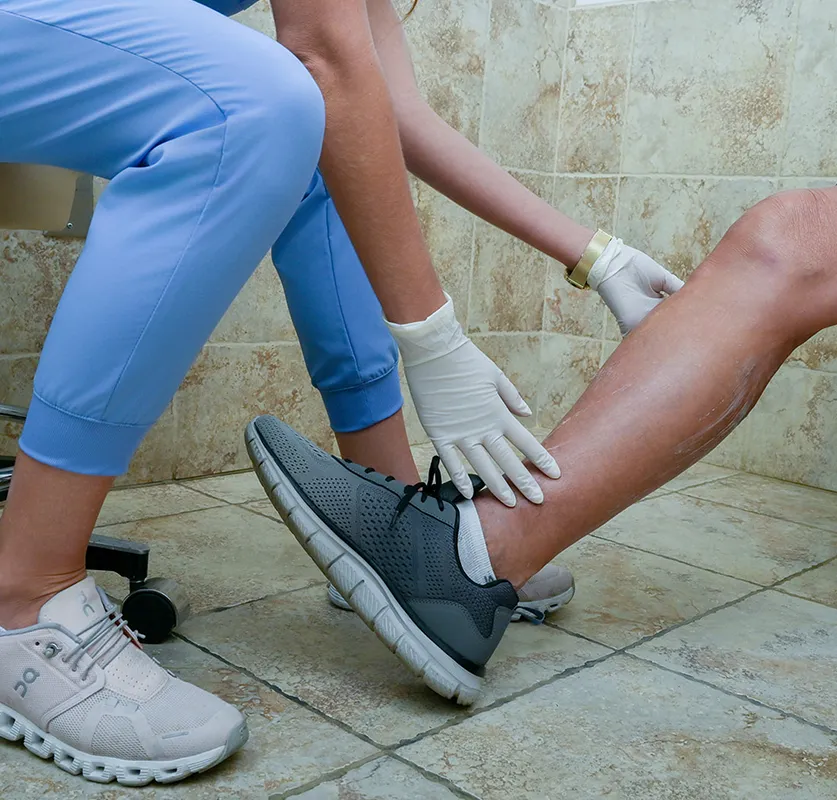
Stage 1: Spider Veins
At the early stage, you might observe the development of spider veins, or telangiectasias. These are tiny, superficial veins that appear just beneath the skin, often taking on a web-like appearance. Although they usually don’t cause any physical discomfort, spider veins can serve as a visible sign of potential underlying vein problems.
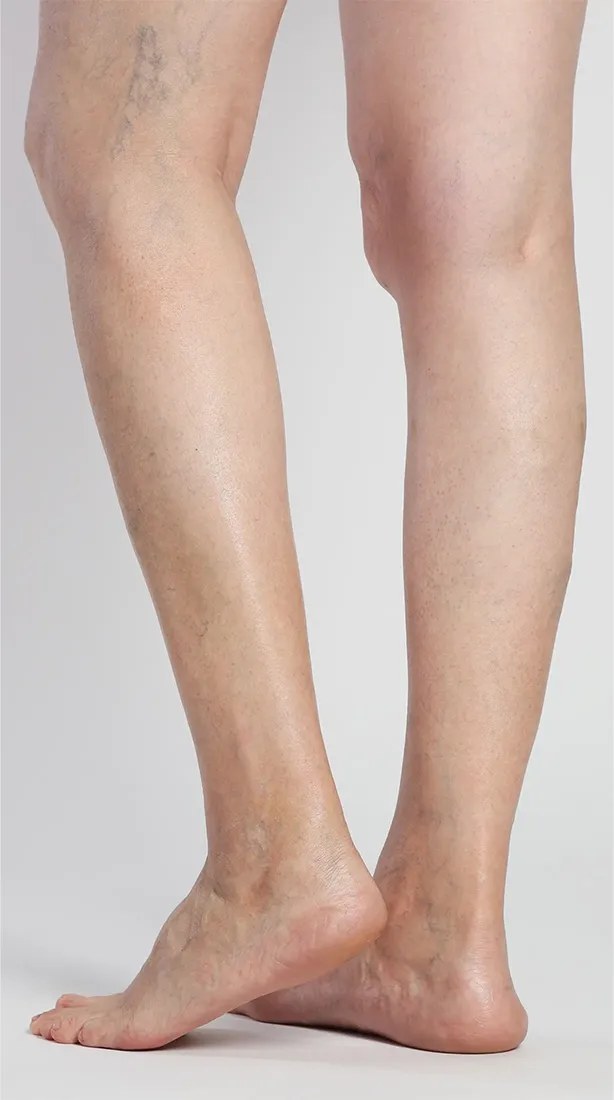
Stage 2: Varicose Veins
As vein disease advances, varicose veins may develop. These are swollen, twisted veins that bulge beneath the skin’s surface and can lead to discomfort, aching, or a heavy sensation in the legs. Varicose veins tend to be more noticeable and may become painful, especially after long periods of standing or sitting.
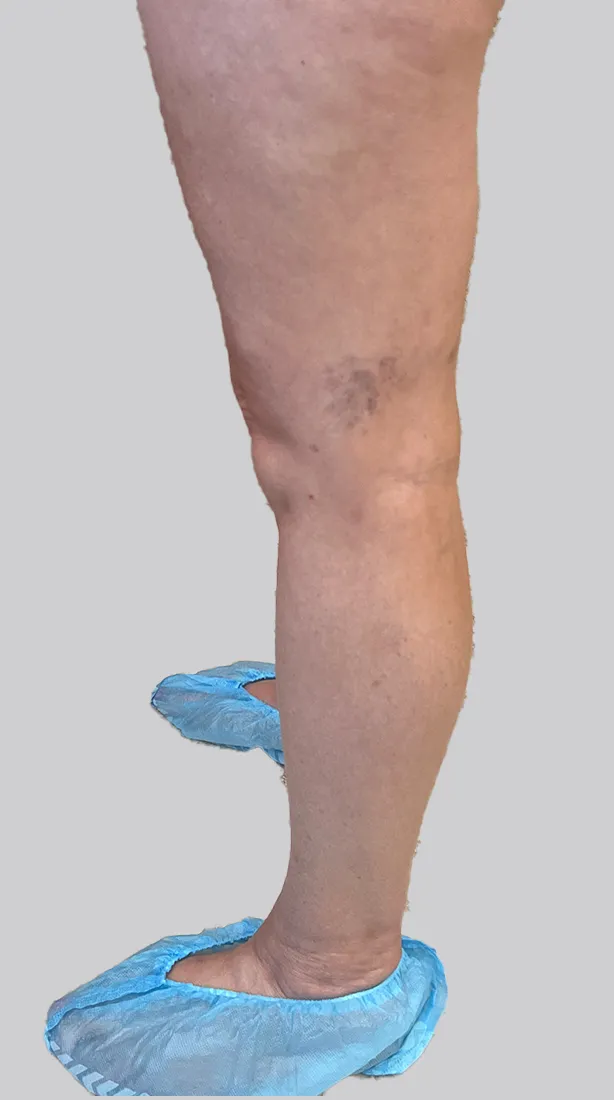
Stage 3: Swelling (Edema)
As vein disease progresses, you may experience edema, or swelling, in the legs, ankles, and feet, especially by the end of the day. This stage can cause discomfort and may interfere with your daily activities and overall quality of life.
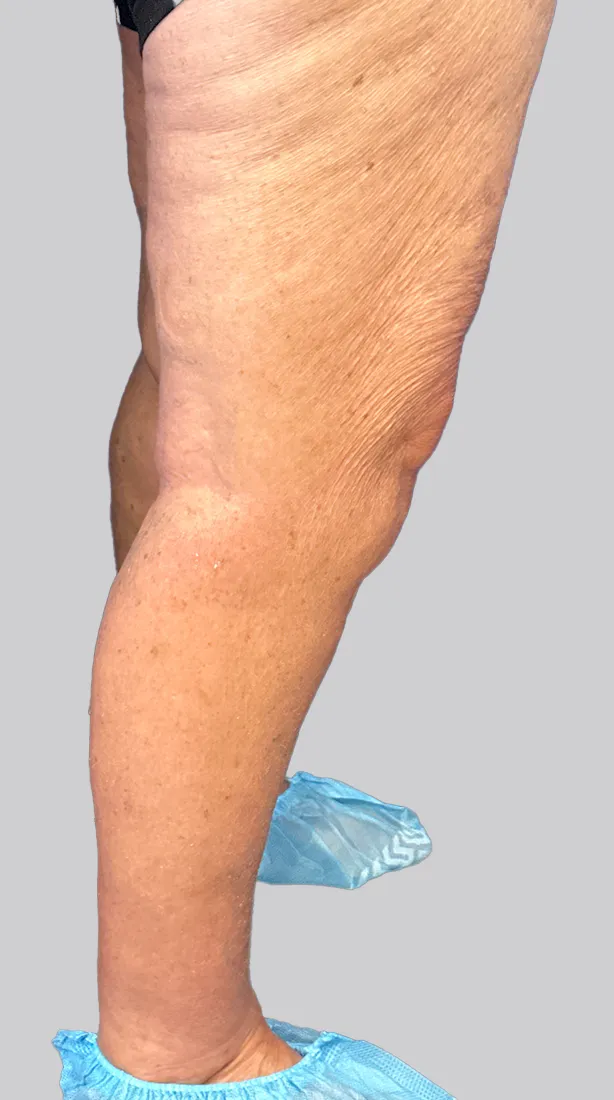
Stage 4: Skin Changes & Discoloration
As vein disease continues to advance, you may notice changes in the appearance and texture of your skin. Affected areas may become discolored, appearing brown or reddish, and the skin may feel dry, itchy, or develop a rash. These symptoms emphasize the importance of addressing vein disease early to prevent further complications.
Stage 5 & 6: Healed and Active Leg Ulcers and Sores
In the advanced stages of vein disease, untreated conditions can lead to the development of leg ulcers and sores. These open wounds can be painful, slow to heal, and may increase the risk of infection. It’s essential to seek medical attention promptly to prevent further complications at this stage.
Your Path to Wellness & Beauty Starts with Us
Get the care you are looking for with a team you can trust. Contact us to request an appointment or to speak to our staff.
Contact us to request an appointment or to speak to our staff.
Signs to Consult with the Vein Specialist
If your legs look like this:
- Varicose Veins
- Sores/Ulcers
- Discoloration
- Spider Veins
If your legs feel like this:
- Tired, Heavy, Restless
- Itchy
- Achy
- Swollen
STEP 1: Consultation
At Joyce Vein & Aesthetic Institute, we believe that your consultation should be a positive, welcoming experience. Unlike other practices where you may feel rushed or unheard, our team is dedicated to listening carefully to your concerns and providing compassionate, attentive care. From the moment you walk in, you’ll be supported by a friendly staff focused on your well-being. Your initial consultation will include Dr. Joyce and his expert team, including our own ultra-sonographer, ensuring a thorough and personalized assessment from the very beginning.
STEP 2: Ultrasound
We understand how inconvenient it can be to leave a doctor’s office for x-rays, labs, or other imaging. That’s why we offer in-house ultrasound, eliminating the need for additional appointments and reducing your wait time. You’ll receive quick, accurate results directly from Dr. Joyce, ensuring a seamless and efficient experience.
STEP 3: Treatment Plan
We are committed to providing you with an effective, customized treatment plan tailored to your needs. We offer a variety of advanced options, including Endovenous Laser Ablation, Microphlebectomy and Spider Vein Treatments. Our team will work closely with you to develop a plan that aligns with your goals, ensuring the best possible outcome. Say goodbye to leg concerns and hello to healthier, more confident legs!
Complete Care Customized for You
Discover our wide range of personalized treatments at our state-of-the-art vein treatment center.
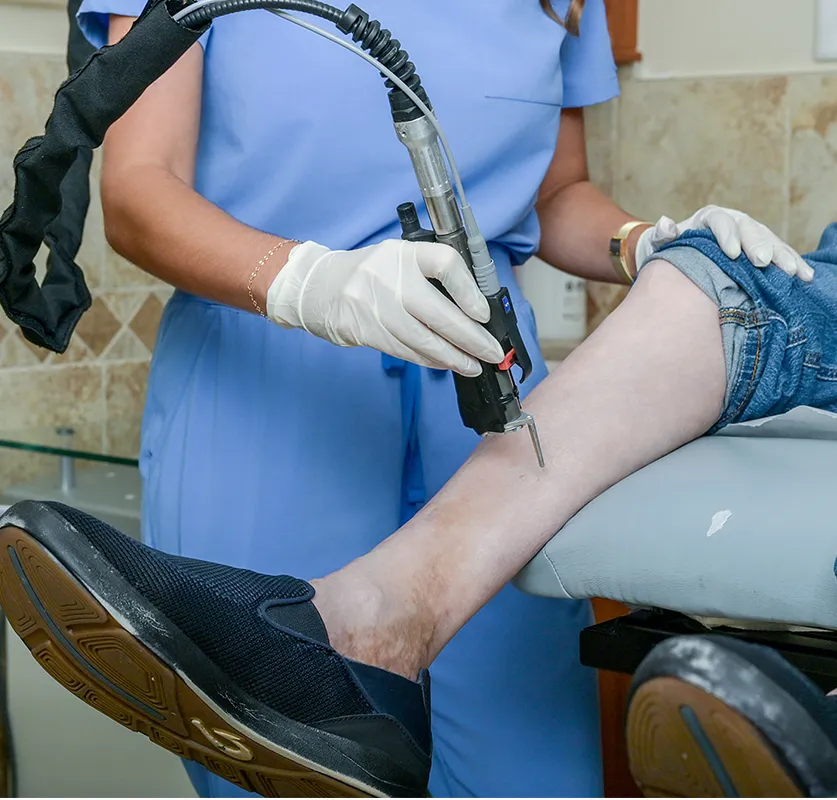
Spider Veins Treatments
How it works, the provider directs laser light at the vein. Laser light can destroy veins without damage to the skin. Small spider veins may disappear immediately after treatment.
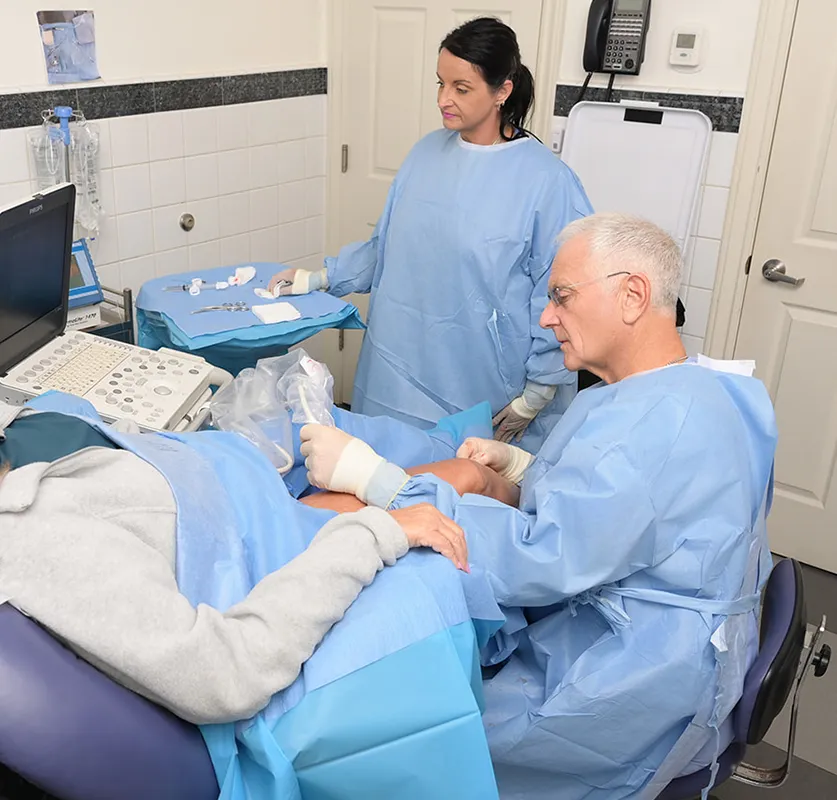
Endovenous Laser Ablation
How it works, A small incision is made in the leg. A thin tube called a catheter is inserted into the vein. Ultrasound imaging is used to guide the catheter into the vein. A laser is used to heat the vein, causing it to collapse and seal shut. The catheter is removed.
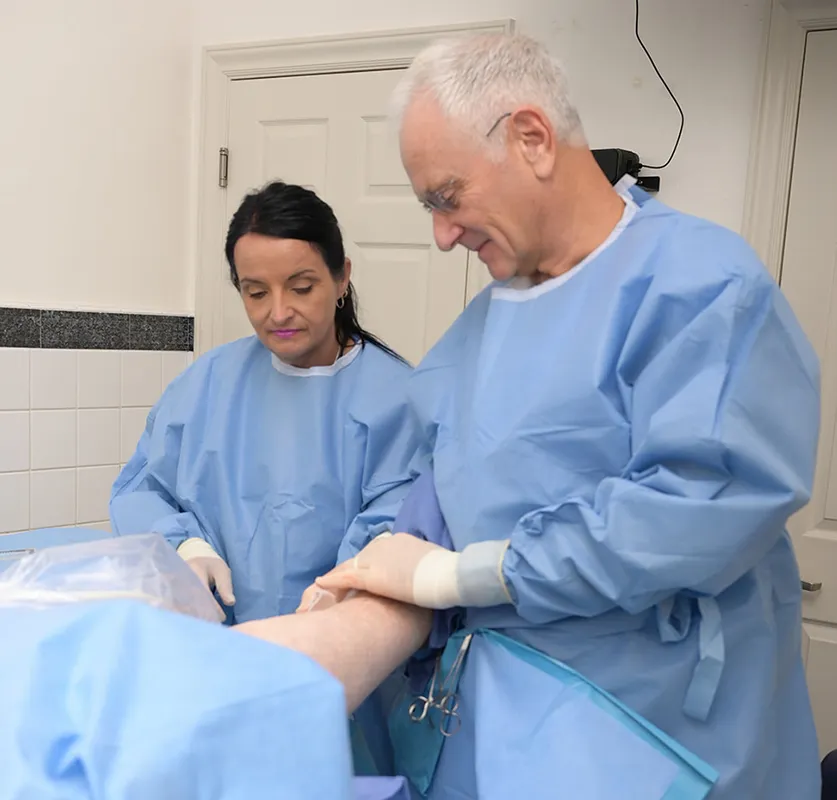
Microphlebectomy
How it works, the skin is numbed with a local anesthetic. Small incisions are made in the skin near the varicose veins. Special instruments are used to remove the veins piece by piece.

Spider Vein Treatment
How it works, the provider directs laser light at the vein. Laser light can destroy veins without damage to the skin. Small spider veins may disappear immediately after treatment.

Endovenous Laser Ablation
How it works, A small incision is made in the leg. A thin tube called a catheter is inserted into the vein. Ultrasound imaging is used to guide the catheter into the vein. A laser is used to heat the vein, causing it to collapse and seal shut. The catheter is removed.

Microphlebectomy
How it works, the skin is numbed with a local anesthetic. Small incisions are made in the skin near the varicose veins. Special instruments are used to remove the veins piece by piece.
Patient Reviews at Joyce Vein & Aesthetic Institute
Explore the inspiring stories of real patients whose lives were transformed by the vein treatments they received from Dr. Joyce. Discover why they chose Joyce Vein & Aesthetic Institute for their care and how their vein conditions were impacting their daily lives. These success stories reflect Dr. Joyce’s dedication to improving the health and well-being of his patients.

June Krippner
Florida Health Care News
“It’s been about a year since my treatment, and my legs feel great. The heaviness is gone, and I have no trouble walking. I also bike and do water aerobics. My legs are very comfortable now. I don’t have any issues,
and I sleep through the night.”

Eddie Moore
Florida Health Care News
Dr. Joyce closed all of my bad veins so they wouldn’t cause more damage and my legs stopped hurting. I don’t feel that crippling pain. My legs are a lot better and they’re healing well. All of the open wounds on my legs are now completely closed.

Clint McGeachy
Florida Health Care News
I was afraid that I might be walking around with those sores forever, but Dr. Joyce really helped me out financially, and now, the wounds on my legs are all closed. For the first time in four years, I have no open wounds on my legs.

Sally Pinches
Florida Health Care News
My legs are perfect! Since the procedures I’ve had zero pain and none of the problems I had before. The throbbing and discomfort at night are gone. I sleep with no trouble, and I can walk for miles. And there’s absolutely no swelling.

Raymond Lydale Campbell
Florida Health Care News
The painful sores on my leg have healed. Dr. Joyce’s laser procedures fixed my leg and improved my circulation. Dr. Joyce is fantastic. He’s knowledgeable and clearly explained everything. He’s the only doctor out of all the physicians I’ve been to that was able to help me.

Mike

